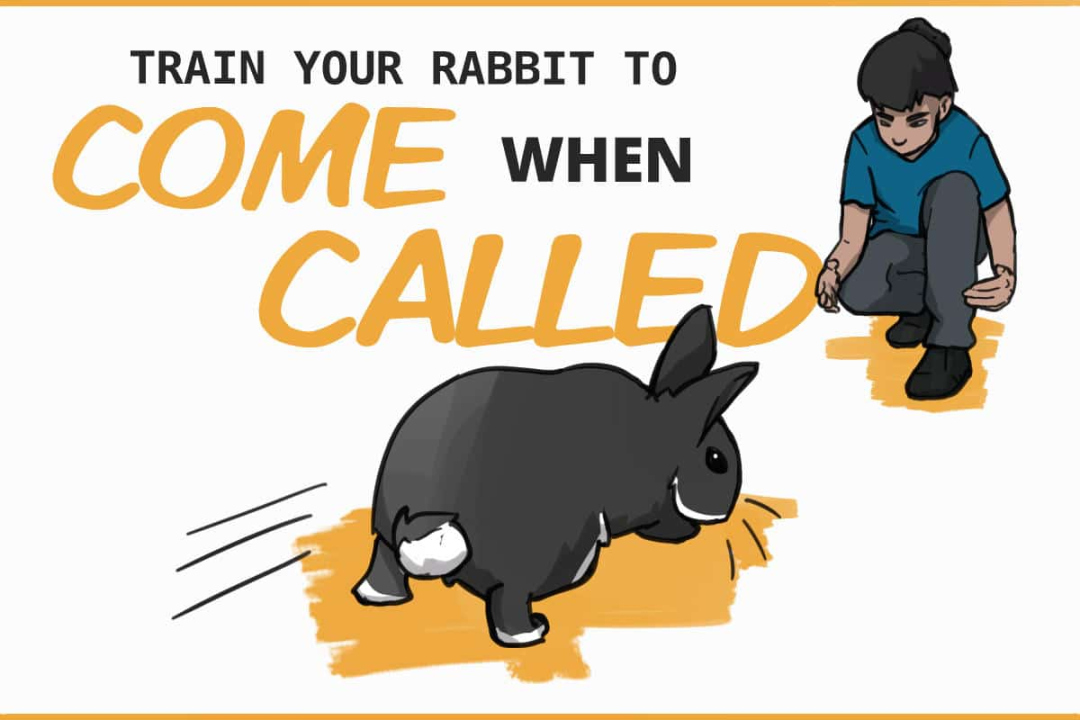How to Get Your Rabbit to Come to You?
Understanding Your Rabbit’s Behavior
Before diving into techniques to get your rabbit to come to you, it’s essential to understand their behavior. Rabbits are prey animals, which means they are naturally cautious and easily startled. They have excellent hearing and a strong sense of smell, which helps them detect potential threats.
Rabbits are also social animals and form strong bonds with their owners. However, their prey instincts can sometimes override their curiosity, making them hesitant to approach you. Therefore, it’s crucial to approach them in a way that makes them feel safe and trustful.
Creating a Safe Environment
Rabbits are more likely to approach you if they feel secure in their environment. Here are a few steps you can take to create a safe space for your rabbit:
- Provide a hiding spot: Rabbits need a place to retreat when they feel scared or overwhelmed. Offer a cozy hiding spot, such as a cardboard box or a small pet house, where they can feel safe.
- Keep noise levels low: Loud noises can startle rabbits easily. Try to keep the environment quiet and calm, especially when you’re trying to interact with your rabbit.
- Remove potential hazards: Ensure that there are no dangerous objects or exposed wires in your rabbit’s play area. Removing potential hazards will help your rabbit feel safe and prevent accidents.
Building Trust and Bonding
Building trust and bonding with your rabbit is crucial for them to feel comfortable approaching you. Here are some steps you can take to strengthen your bond:
- Offer treats: Rabbits love treats! Use their favorite treats, such as small pieces of fresh vegetables or fruits, to create positive associations. Offer treats while sitting near your rabbit, allowing them to approach you willingly.
- Patience is key: Rabbits are naturally cautious, so it’s important to be patient. Avoid making sudden movements or forcing your rabbit to come to you. Allow them to approach at their own pace.
- Spend quality time together: Dedicate regular time to spend with your rabbit, such as gentle petting or grooming sessions. This will help them associate positive experiences with your presence and build trust over time.
Using a Command or Sound Cue
Teaching your rabbit to respond to a specific command or sound cue can be an effective way to get them to come to you. Follow these steps to establish a command:
- Choose a command: Decide on a word or sound cue that you want your rabbit to associate with coming to you. It can be as simple as saying Come or making a specific whistle.
- Repetition and reward: Whenever your rabbit comes towards you, use the chosen command or sound cue consistently. Reward them with praise and treats to reinforce the positive behavior.
- Practice and repetition: Consistency is key when training your rabbit. Repeat the command and reward process in different environments to ensure your rabbit recognizes and responds to it reliably.
Common Mistakes to Avoid
When trying to get your rabbit to come to you, it’s important to avoid certain mistakes that can hinder the process. Here are some common mistakes to steer clear of:
- Forcing your rabbit: Forcing your rabbit to come to you can make them feel scared or threatened. Always allow them to approach you willingly, and avoid any sudden movements or actions that may startle them.
- Lack of patience: Building trust and bonding with your rabbit takes time. Be patient and avoid rushing the process, as it may backfire and make your rabbit more hesitant to approach you.
- Not using positive reinforcement: Positive reinforcement is essential when training your rabbit. Always reward them with treats and praise when they come towards you, as this will encourage the behavior.
- Overlooking body language: Rabbits communicate through body language. Pay attention to their cues, such as ears laid back or thumping their hind legs, which may indicate fear or discomfort. Respect their boundaries and give them space when needed.
Frequently Asked Questions (FAQs)
1. How long does it take for a rabbit to trust you?
Building trust with a rabbit can vary depending on the individual rabbit’s personality and previous experiences. It may take weeks or even months of consistent positive interactions for a rabbit to fully trust you.
2. Can I use a leash to train my rabbit to come to me?
Some rabbits can be trained to walk on a leash, but it’s not suitable for every rabbit. Make sure to use a harness specifically designed for rabbits and introduce it gradually, allowing your rabbit to get used to the feeling before attempting to train them to come to you.
3. What if my rabbit doesn’t respond to threats?
While most rabbits are motivated by treats, some individuals may have different preferences. Experiment with different types of treats to find what your rabbit enjoys the most. Additionally, some rabbits may respond better to praise and gentle petting as rewards.
4. Will my rabbit ever come to me on its own?
With patience, consistency, and positive reinforcement, your rabbit is likely to become more comfortable and may start approaching you on its own. Remember that every rabbit is different, and it’s essential to respect their boundaries and individual personalities.
Related Articles…
Copyright Notice:
The images displayed here are sourced from the internet, with copyrights held by respective owners. For removal of any copyrighted image, please email us.
